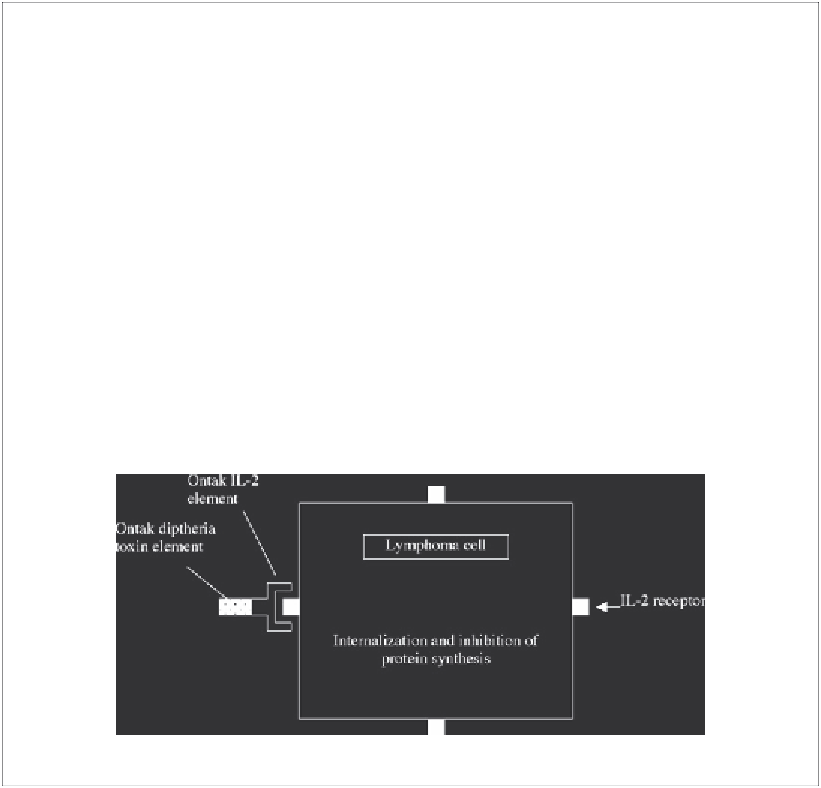Biomedical Engineering Reference
In-Depth Information
•
Administration of monoclonal antibodies capable of binding the IL-2 receptor. (It must be con-
fi rmed that the antibody used is not itself capable of initiating signal transduction upon binding
the receptor.) See the products 'Zenapax' and 'Simulect'; Chapter 13.
•
Administration of IL-2 variants that retain the ability to bind the receptor, but which fail to
initiate signal transduction.
•
Administration of IL-2 coupled to bacterial or other toxins. Binding of the cytokine to its recep-
tor brings the associated toxin into intimate contact with the antigen-activated T cells (and other
cells, including activated B cells), leading to the destruction of these cells. This would induce
selective immunotolerance to whatever specifi c antigen activated the B/T cells. One product
(tradename Ontak; Box 9.1) that is based upon this principle is now in general medical use.
Box 9.1
Product case study: Ontak
Ontak (tradename, also known as denileukin diftitox) is an engineered fusion protein produced
by recombinant means in
E. coli
. It gained approval for general medical use in the USA in
1999 and is indicated for the treatment of patients with cutaneous T-cell lymphoma (CTCL).
The fusion product is composed of diphtheria toxin fragments A and B directly linked to IL-2.
It displays a molecular weight of 58 kDa and is purifi ed using reverse-phase chromatography
and diafi ltration. The product is formulated as a sterile frozen solution containing citric acid,
EDTA and polysorbate as excipients. It is presented in single-use vials. The product is normally
administered i.v. daily for fi ve consecutive days every 3 weeks over the treatment period.
The IL-2 portion of the fusion protein facilitates product interaction with cells displaying
cell surface IL-2 receptors, found in high levels on some leukaemia and lymphoma cells,
including CTCL cells. Binding appears to trigger internalization of the receptor-fusion
protein complex (Figure 9.B1). Suffi cient quantities of the latter escape immediate cellular
destruction to allow diphtheria toxin-mediated inhibition of cellular protein synthesis. Cell
death usually results within hours.
Figure 9.B1
Mechanism of Ontak action

Search WWH ::

Custom Search